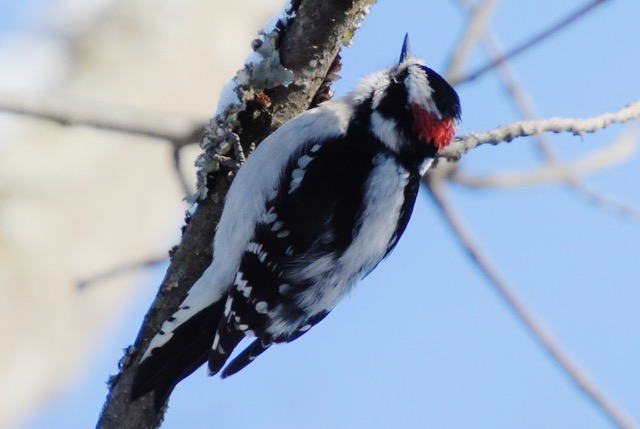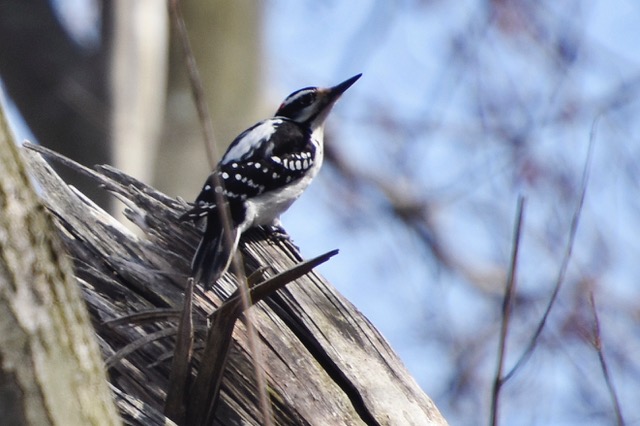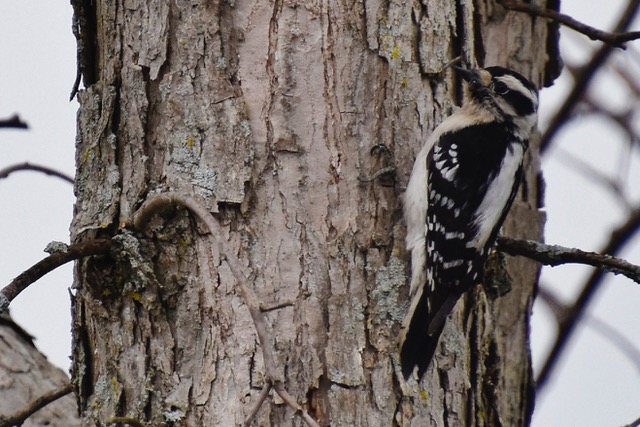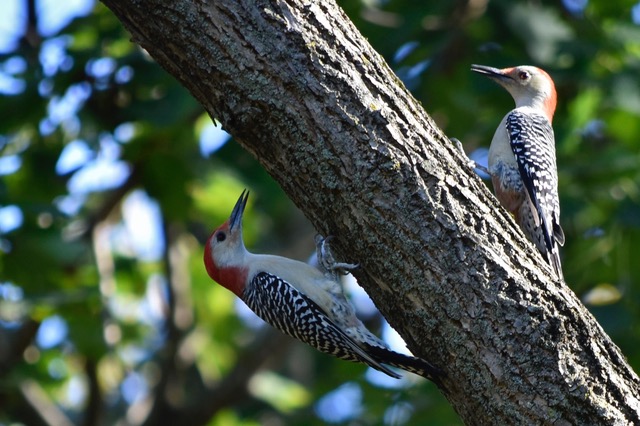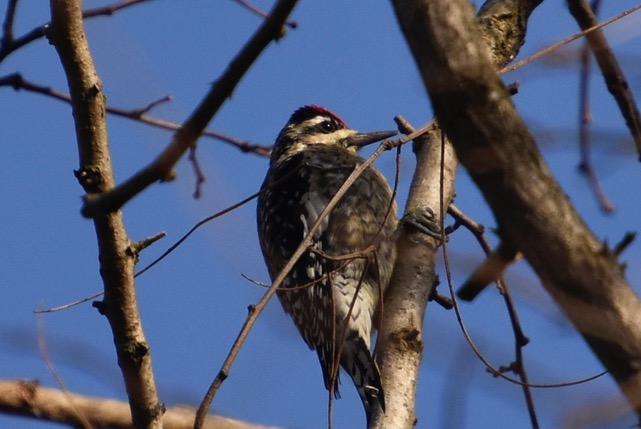Rat-tat-tat!
Any time you take a walk along our perimeter path or woodland trails you will invariably hear the drumming rat-tat-tat of a Woodpecker. There are 22 species of woodpecker in North America and here at Lumberton there are there are four that make regular appearances and one that is more sporadic. The four you are most likely to encounter are the Downy, Hairy, Red-bellied and Northern Flicker. The Yellow-bellied Sapsucker is less common but is usually sighted in the winter on our campus.
All woodpeckers have common characteristics. The most common are a stiff tail that they use as a prop when clinging to the trunk of a tree; a chisel-like bill that they use to excavate wood in their search for their principal diet of insects and in many cases nesting sites. They are generally found singly in wooded areas and fly with a very distinctive deeply undulating flight path. The drumming sounds and rhythms of some species are said to be distinctive but as a general rule the larger the bird the louder the sound. However, a lot depends on the type of and condition of the tree being worked on. Our smallest woodpecker, the Downy, can produce quite a din as it pecks away on a solid hardwood tree.
The Downy and Hairy Woodpeckers look very much alike in their plumage pattern but differ in size with the Hairy being about 2.5 inches larger. However, the best distinguishing characteristic is in the bill size. The Hairy’s is much longer and thicker than that of the Downy. Both birds will come to feeders for suet.
The poorly named Red-bellied Woodpecker (its belly only shows a tint of redness and that is difficult to see) vocalizes a lot and will be encountered very frequently along the woodland trails, perimeter path and at feeders. Both the male and female have a distinctive barred black and white back and wings. The back of the head is bright red with the coloration extending from the nape of the neck to the back of the skull in the female and over the top of the skull to the beak in the male.
The Northern Flicker is another noisy bird often encountered and if you see a bird with an undulating flight and a clearly visible white rump you have seen the flicker. This bird used to be called the Yellow-shafted Flicker because of the distinctive yellow color of its under wing and tail. The male can be distinguished from the female because of its “mustache”. This shows up as a black bar extending from the beak back along the face below the eye. Both male and female have a black patch at the top of the breast and dark spots covering the breast on to the belly.
The Yellow-bellied Sapsucker might not be seen often but its work on tree trunks is readily apparent. They drill small rows of parallel holes around the trunk of a tree. They do this to get the sap that will flow into the holes and also any insects that my be trapped. And yes, the adult does have a yellowish belly. Both the male and female have a red cap but the male also has a red throat while the female’s is white.
The one woodpecker that we are all looking for is the largest (crow size) woodpecker in North America. That is the Pileated Woodpecker. It has not been seen at Lumberton but this past January it appeared at the Woods Cottage on the main campus. If you think of Woody Woodpecker the Pileated is its model. The only larger bird is the Ivory-billed Woodpecker and it is believed to be extinct although just a few years ago there was thought to be a sighting in Arkansas that had the bird world buzzing. After long and careful study it could not be verified and was probably a Pileated.
Avian Life series text and photographs by Robert Koch

